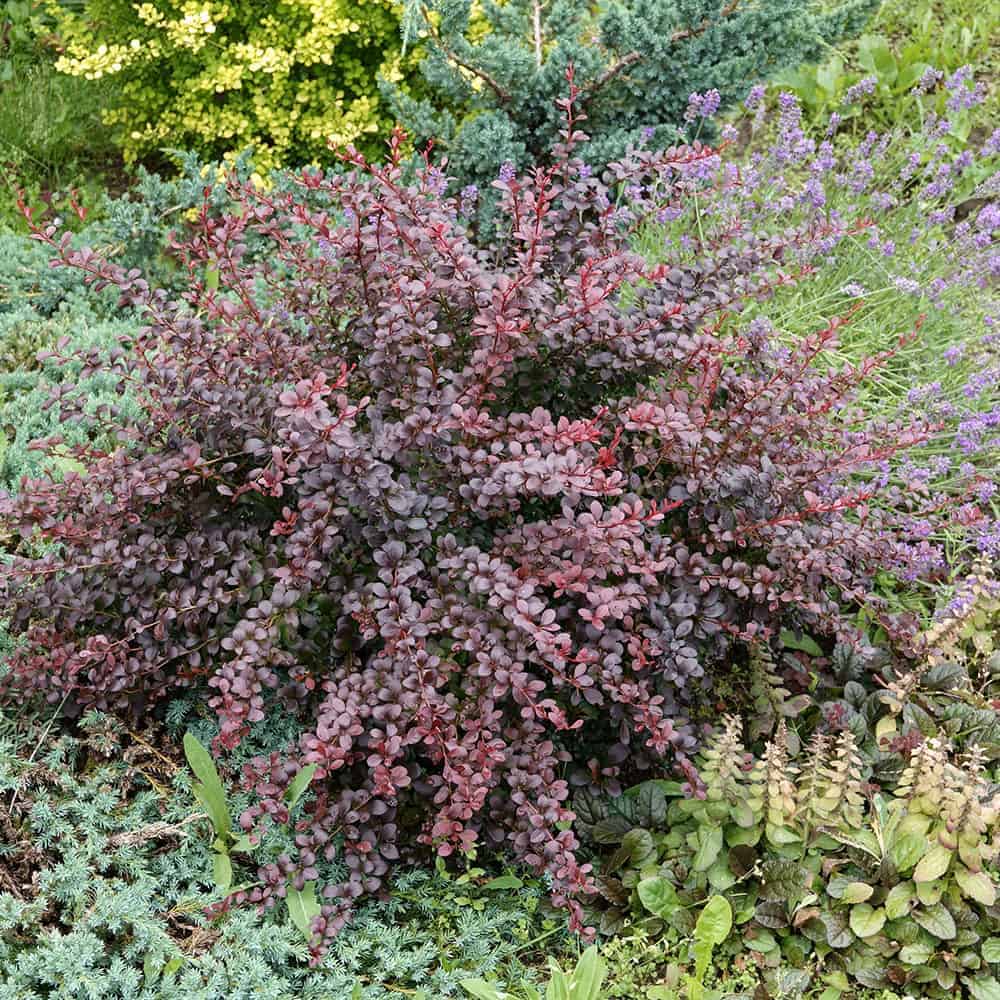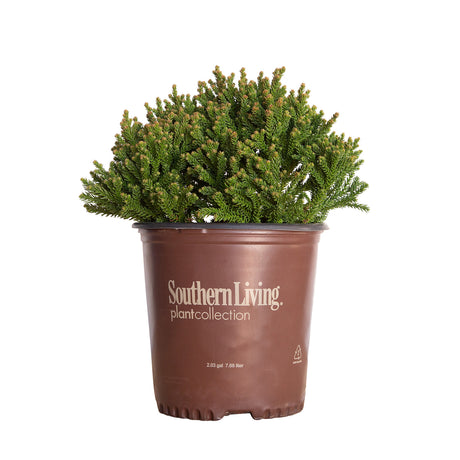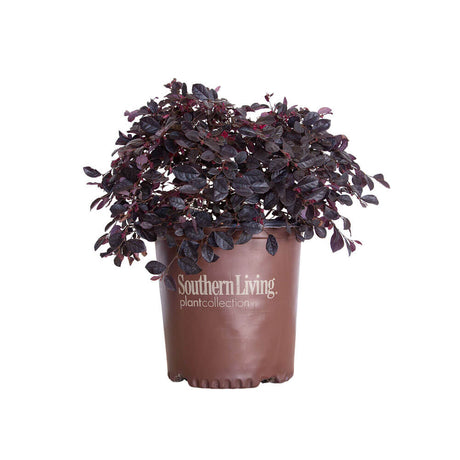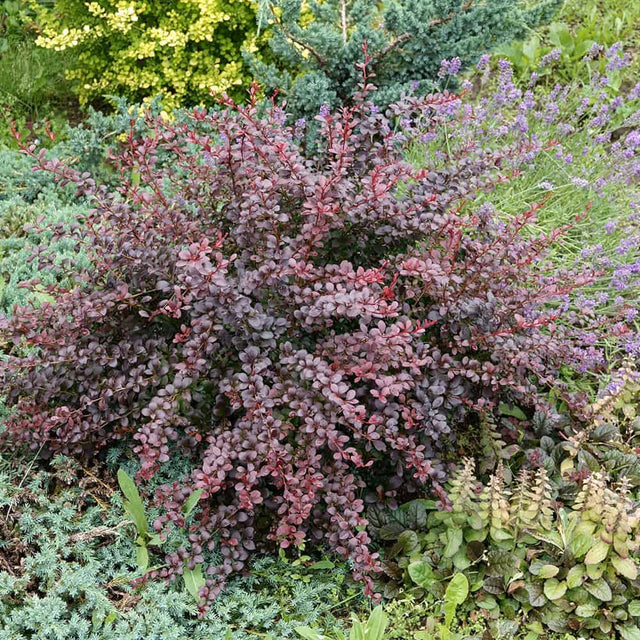Crimson Pygmy Barberry Japanese Dwarf
Crimson Pygmy Barberry Japanese Dwarf - 2.5 Quart is backordered and will ship as soon as it is back in stock.
Couldn't load pickup availability
Description
Description
The Crimson Pygmy Dwarf Japanese Barberry is a great selection to bring bold color to your garden. The deep burgundy-red foliage makes for a really unusual and eye-catching textured element in your landscape.
This is a deciduous plant, which means that it will lose its leaves in winter and return with new growth in spring. Normally, this would mean that it would offer very little interest in the winter landscape besides its bare branches. However, this Barberry's foliage will be highlighted with hues of orange in late fall and into winter.
Thanks to its slow-growing nature, pruning is essentially completely unnecessary. So it's a very low-maintenance selection. It reaches 2-3' H x 2-3' W at maturity.
Use this variety as a low hedge, an accent in a mixed garden bed, in a foundation planting, or as a mass planting.
Crimson Pygmy Barberry Care
This variety is hardy from USDA Zones 4-8. Once established in the landscape, it's quite cold-hardy and can handle temperatures between -30° and -20° F.
They grow best with Full Sun exposure. Too little sun will affect their ability to produce dense foliage.
Water your new plantings 2-3 times per week for the first growing season. This helps them grow deep root systems that will help them succeed over time.
Grows well in most average quality soils with good drainage. Avoid planting in consistently wet sites.
Fertilize in early spring with a slow-release fertilizer to promote new growth and the overall health of your plant.
How to Plant the Crimson Pygmy Barberry
First, find a suitable location for your new plant(s). Dig a hole three times the width of your plant's root ball. The hole should be just deep enough that the top of the plant’s root ball is about even with or slightly above the ground around the hole. Next, mix your native soil with a bag or two of some rich garden soil or composted manure to provide additional nutrients for your plant. If your soil is clay-rich, we recommend mixing pine bark in with your native soil at a ratio of about 1:1 to improve drainage and soil aeration. Fill the hole back up with your soil mixture and gently tamp it down. Lastly, soak the new planting to help the soil and plant get situated.
Popular Companion Plants
The Crimson Pygmy easily provides dynamic texture and color contrast with many different plants. The Dwarf Alberta Spruce Tree looks fantastic planted with it because of its naturally pyramidal growth, upright nature, and needled foliage. It also looks great with bright yellow plants, such as the Sunshine Ligustrum or Gold Mop False Cypress. Their brilliant foliage really pops in the landscape with the dark wine-colored barberry foliage. Otherwise, try it with low-growing cool-colored plants such as Groundcover Junipers or the Pancake Arborvitae. Their blue-needled foliage makes for a really unusual and beautiful complement.
Why Buy Crimson Pygmy Barberry Plants from PlantsbyMail.com?
We carefully select happy and healthy plants that are ready to thrive in your landscape. We water them, carefully package them for shipment in our custom boxes, and ship them straight to your front door. All of our plants are well-established and matured into their pots. We never ship anything bare-root. If you're not happy with your order, give us a call at 1-866-618-5659 or send us an email at info@plantsbymail.com. We'll do whatever we can to make it right.
Care & Use
Care & Use
Spacing Recommendations
Spacing Recommendations
-
Scientific Name
-
Hardiness Zone4, 5, 6, 7, 8
-
Sun ExposureFull Sun
-
Evergreen or DeciduousDeciduous
-
FeaturesAttracts Birds / Butterflies, Sun Loving, Variegated
-
Feature ColorGreen, Red
-
UsesAccent, Border, Foundation Planting, Hedge, Mass Planting, Mixed Garden Bed, Woodland Garden
-
Water NeedsWater-Wise
-
Bloom SeasonSummer
Growing Zones : 4, 5, 6, 7, and 8







